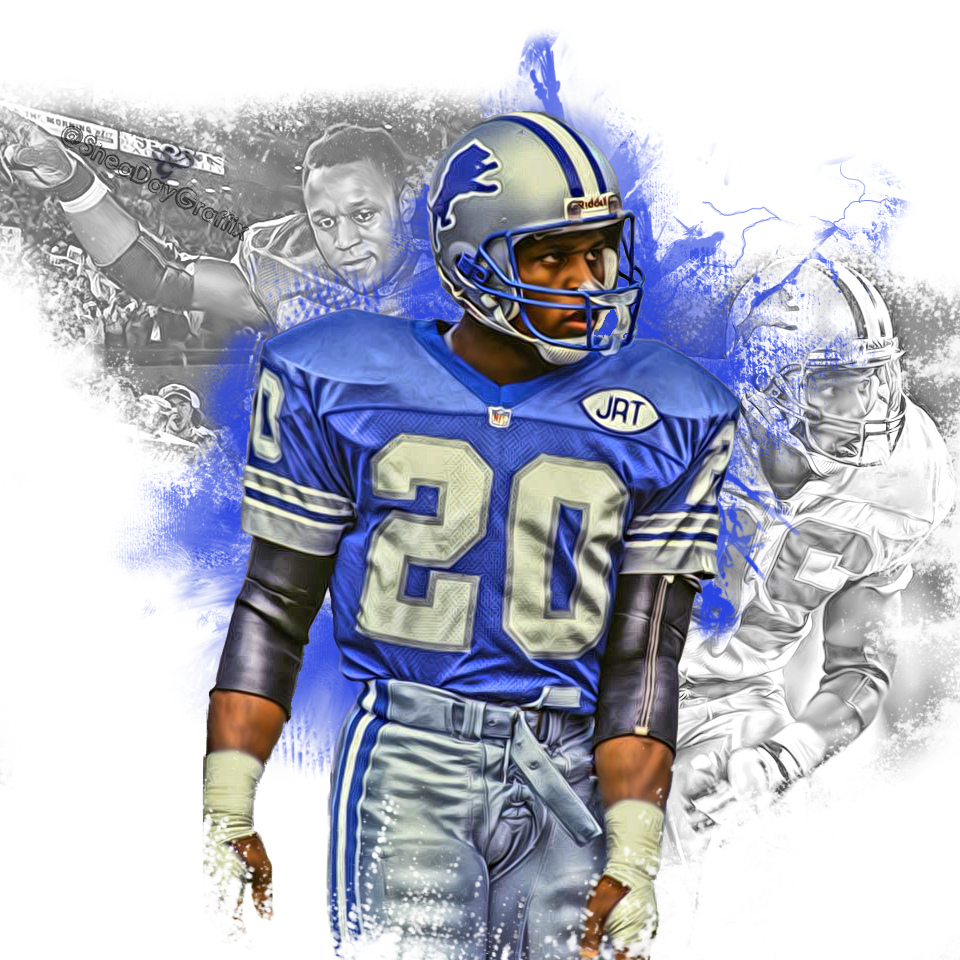Not many people will argue with you that Barry Sanders is one of the greatest running backs and football players in NFL history.
Sanders put together a Hall of Fame career in just 10 seasons with the Detroit Lions and was must-see TV for football fans every Sunday for a decade.
At just 5'8" and around 200 pounds, Sanders made up for his lack of size with a commitment to strength training.
Lifting weights helped Sanders to stay healthy and become one of the most agile and explosive backs ever.

Hall of Fame Running Back Barry Sanders - Photo By: Shea Huening on flickr
The Barry Sanders leg workout
The leg workout below is believed to be one that Sanders did frequently early in his playing days. The exercises are performed in a circuit, with no rest in between, until the final exercise is completed.
The goal is to complete the workout twice through, only resting when all 5 exercises are completed. Legend says that Sanders apparently was able to complete the leg circuit 13 times consecutively without taking any break.
Exercise | Reps |
|---|---|
Back squat | 20 |
Alternating forward lunge | 10 per leg |
Alternating lunge jump | 10 per leg |
Ice skaters - side jump | 20 |
Jump squat | 20 |
A workout like this would certainly blast the legs. If you were to try this, it would be best to use light weights or no resistance at all. The exercises are meant to be done in an explosive manner to improve speed, power, and agility.
Sanders came from humble athletic beginnings, as was shared in an article by Greg Shepard while Sanders was still in college. As a freshman in high school, he was only 5 feet tall and 105 pounds and had a bench press maximum of 95 pounds.
It is amazing to think of the caliber of athlete he became despite his size. Sanders used it as motivation, saying "Since I was so much shorter than the others, I wanted to lift to make up for it." He found that plyometrics and strength training helped to improve his performance. He also played a lot of basketball in his youth and high school years, which he believes helped his overall athleticism.
After years of training, the workouts for Sanders paid off. By the time he left college, he had bulked up to 200 pounds and amassed an amazing football career with some impressive physical feats:
- 360 pound bench press
- 556 pound back squat to parallel
- 365 pound power clean
- 40 inch standing vertical jump
- 4.45 second 40 yard dash
In addition to performing impressive displays of strength for someone his size, Sanders also believed that lifting weights helped him to improve his speed, power, and agility while also keeping him flexible and healthy despite almost always being the smallest player on the football field.
I've been lifting a long time. I try to work out as hard as I can. I wouldn't be where I am now without weights. They've made me fast and quick, with a bigger body weight. Also, I've never been hurt. Flexibility is a big part of my training. Some people neglect stretching, but it's important. I do it for running style. I see some backs tighten up when they break open, and they get caught. The greater your flexibility, the more relaxed you can be when you race for the goal.
The Barry Sanders workout routine shows just how committed he was to become the best. His insane work ethic took him from a 105 pound freshman to a Heisman Trophy winner in less than 7 years.
After his stellar career at Oklahoma State, Sanders was the 3rd overall pick in the 1989 NFL Draft by the Detroit Lions, who he played 10 seasons for. He was named to the Pro-Bowl team every season of his career and was the NFL MVP in 1997.
He amassed amazing career stats of 15,269 yards, which was the second most ever at that time. He also had 99 rushing touchdowns and 10 receiving touchdowns over the course of his 153 career games. Sanders retired after the 1998 NFL season and was inducted into the Pro Football Hall of Fame in 2004.

